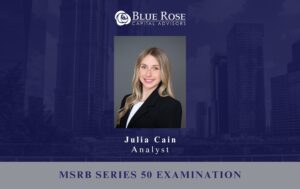The debt ceiling for the United States is currently suspended until July 31 and at that time, it will be set to the amount of debt on that day. Once that new limit is set, by design, the Treasury department will be legally prohibited from incurring any additional debt. Today, State and Local Government Series Securities (SLGS) are being purchased by issuers for taxable advanced refundings of tax-exempt bonds and, prior to the passage of tax reform legislation that took effect in 2018, they were also used for tax-exempt advanced refundings.
Once the debt ceiling is breached, to create room for ongoing funding of government operations, the U.S. Treasury typically takes so called “extraordinary measures” to create room for the issuance of additional debt under the debt ceiling. Included in these measures has been the suspension of the sale of SLGS. These extraordinary measures typically give the Treasury department some time and room to operate. How long these measures might work before Congressional action is required is difficult to accurately predict in most years.
Because of the uncertainty relating to the cashflows resulting from COVID-19 relief disbursements, U.S. Treasury Department Deputy Secretary Wally Adeyemo said that predicting the date at which “extraordinary measures” will no longer provide relief is even more difficult to calculate this year. The Bipartisan Policy Center recently released a report that suggested that “extraordinary measures” will last until sometime in the Fall. Once these measures are exhausted, the Treasury department will be unable to fund operations and debt service on existing Treasury debt. At or prior to this time, Congress must take action to prevent a default.
Given the current state of the budgetary process in Washington, it is unlikely that Congress will act soon to take any precautionary actions ahead of July 31. As such, it is likely that the SLGS window will close, possibly through the balance of the summer. If the Treasury suspends the sale of SLGS, issuers will need to purchase alternative “open market” securities for escrows that otherwise would have been eligible to be funded with SLGS. These open market escrow portfolios generally consist of U.S. Treasuries and Agencies, with parameters for eligible securities varying by indenture.
Blue Rose regularly serves as a bidding agent for open market escrows, which can prove more cost-effective than SLGS even when the SLGS window is open depending on the size and duration of escrow cash flows. If you are undertaking a refunding or defeasance transaction, we encourage you to reach out to us with indicative escrow cash flows to determine if an open market escrow could provide value, either through generating savings vs. SLGS or as a substitute for them in the event of a SLGS window closure.
About the Author:
Sam Gruer, Managing Director
Sam Gruer, a 30-year municipal market veteran, joined Blue Rose in 2017 as a Managing Director and leader of the firm’s reinvestment business unit. Mr. Gruer guides his clients through the debt/swap/reinvestment transaction process by making strategic recommendations based on sound, thoughtful, and sophisticated analysis. He also offers expert advice on determining the optimal structure for reinvestment of bond proceeds by evaluating risk tolerance, identifying legal restrictions and estimating cash flow needs for his clients. He serves clients from our Roseland, New Jersey office. Mr. Gruer can be reached at: [email protected]
Media Contact
Megan Roth, Marketing Generalist
952-746-6056



